|
Naam Ghar or Kirtana
Ghar:
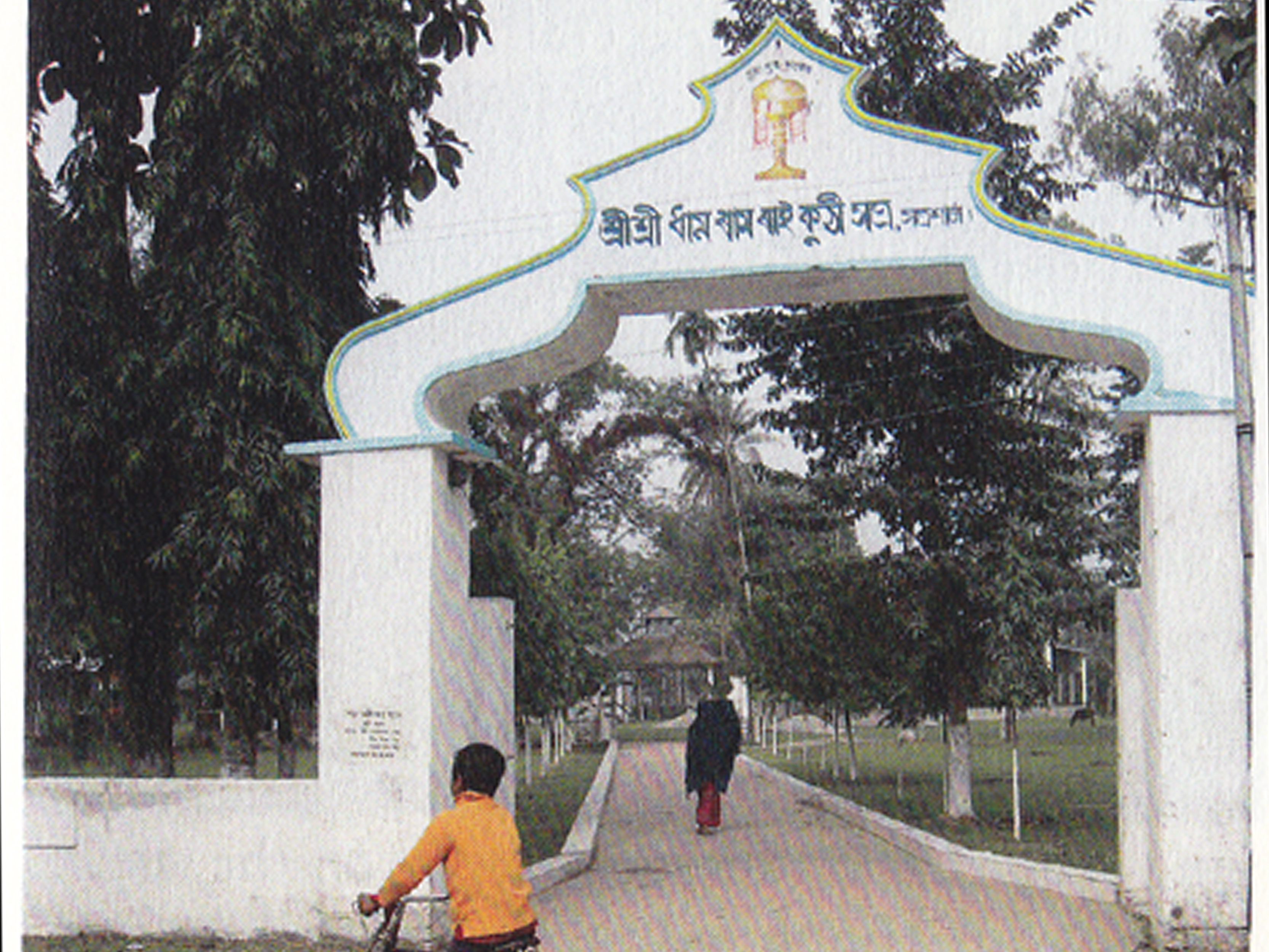
Naam ghar
or Kirtana ghar is Sankaradeva�s single most outstanding legacy for
the Assamese people. The focal point of his religion, its influence on
Assamese life is all-pervading. An epitome of simplicity, Naam ghar
has been the cornerstone of
Assam�s
socio-religious structure for over half a millennium.
Basic in design,
naam ghar is a large prayer hall, built in the traditional style and
generally placed in an east-west direction. Its open sides are symbolic of
its acceptance of people of every caste and creed. It has an adjunct, the
�sanctum sanctorum� known as the �monikut� where valuables and
scriptures are kept. In place of idol, the Bhagawata or its concise
version Gunamala is placed in the Monikut. Sometimes, other
scared texts-the Kirtana Ghosa or Dasham-Adi (the first part of the
tenth chapter of the Bhagawata), both by Sankaradeva; the Naam Ghosa
or Bhakti Ratnavali by Madhavadeva, are also placed in the
monikut. Today, many kirtana ghars, including Barpeta, allow
idols of Lord Vishnu or one of his avatars in addition to the sacred
books.
The eminent artist and
filmmaker Jyoti Prasad Agarwala (1903-51), while on a visit to Berlin in
1930, saw there a few newly constructed community centres. He was struck
by the uncanny similarities in their design and concept to Sankaradeva�s
prayer hall, the naam ghar, conceived four centuries earlier. Upon
his return to Assam in 1931, he closely examined the sculptures and
paintings at Bardowa xatra. He found further echoes, this time of
the �revolutionary� modern sculptures of Jacob Epstein (1880-1959) he had
just seen in London. Even the altar, the multi-stepped throne for the
�sacred book� reminded him of Cubism, an art form of the early 20th
century.
Inside a naam ghar,
equality is preached as well as practiced. During ceremonies, everybody
sits cross-legged on the floor with bare feet, and partakes of the same
Prasad. The devotees, irrespective of caste, creed or speech, chant the
name of Lord Krishna during three broad sessions of naam prasanga
a day, marketing the morning, afternoon, and evening prayers. Madhavadeva
later increased this to fourteen; a practice followed to this day at
Bardowa and Barpeta kirtana ghars. Worship involves the burning of
incense, lighting of earthen lamps, and other rites. An akshaya banti,
the eternal lamp symbolic of the light of faith, is kept alive by a
continuous supply of oil.
Naam ghar
is, however, more than a mere congregational hall of prayer. It brings
about a degree of bonding within the community through people praying
together and participating in its various activities. It is a confluence
where various social issues, including disputes and developmental
activities affecting the community, are discussed. Here, all sections of
society assemble and arrive at decisions through a democratic process.
Nobody is barred from expressing his views on matters under discussion. In
many respects, naam ghar assumes the role of a village parliament
albeit without legal or judicial sanction. It provides a platform for
grass-root democracy, and can be termed the precursor of Panchayati Raj
now being actively espoused.
For more than 500
years, Sankaradeva�s naam ghar has been the focus of his teachings
and dots every nook and corner of Assam.
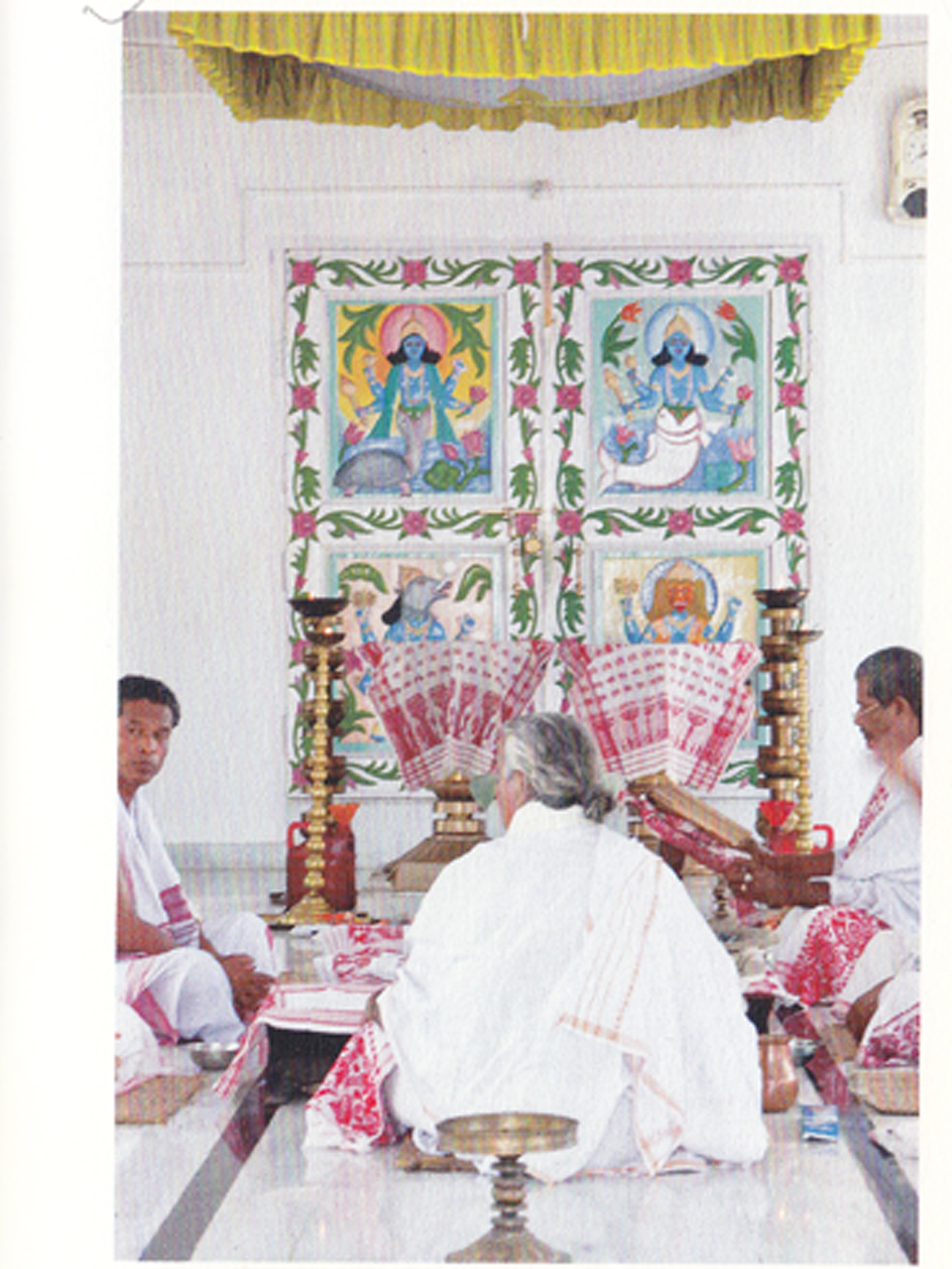
Xatra
Inspired by
Sankaradeva�s naam ghar, his devotees later expanded its
infrastructure to establish xatras. The word xatra finds
mention in scriptures since Vedic times. It has been used to denote
various things or places never straying far from its root, xat,
meaning good or true. In Assamese Vaishnavism, xatra has over the
years evolved to mean a monastery or a habitat where vaishnavites
reside or gather to recite and listen to prayers to the Lord, and
participate in religious and cultural activities. Somewhat similar in
concept to Benedictine monasteries, Buddha Vihars, and Maths
of other monastic communities in India, xatras place great emphasis
on development of art and culture through religious practices.
The xatra
institution is envisaged as centre of society focus, fundamental to the
preservation of diverse traditions of religious learning. Monks train in
all aspects of xatriya life in addition to receiving a general education.
Studying the scriptures in both Sanskrit and Assamese helps them to serve
as responsible functionaries of the xatras. Need for contemporary
education has not been lost on the xatra managements either. Recent
initiative by Phoolbari xatra in noni in Nowgong for
imparting modern technical education is a case in point.
The primary functions
of a xatra are to: propagate Vaishnavism based on the tenet
of monotheism; initiate disciples; provide rules of conduct for neophytes;
and hold religious festivals pooja (worshipping), naam prasanga
(reading of religious books), nritya (dance), geet (song),
art and sculpture.
The hub of all
activities in xatra is the kirtana ghar. The pre-eminence of
the kirtana ghar in the xatra set-up is underscored by the
fact that both Bardowa and Barpeta began with a kirtana ghar.
Sankaradeva�s followers later expanded them into xatras for
disciplined propagation of the various facets of the Vaishnava faith including dance, drama and music.
The xatra, with
its own organizational structure, is run in a democratic manner. The
Xatradhikar is the principle spiritual guide and preceptor; he
initiates disciples and conducts key religious functions. The monks or
bhakats carry out their assigned tasks, and lead a life of devotion.
Both celibate and married monks are allowed within the campus; celibate
devotees are called kevaliya, keval meaning single. Sisyas or
the lay devotees live in the surrounding villages, leading the life of a
householder.
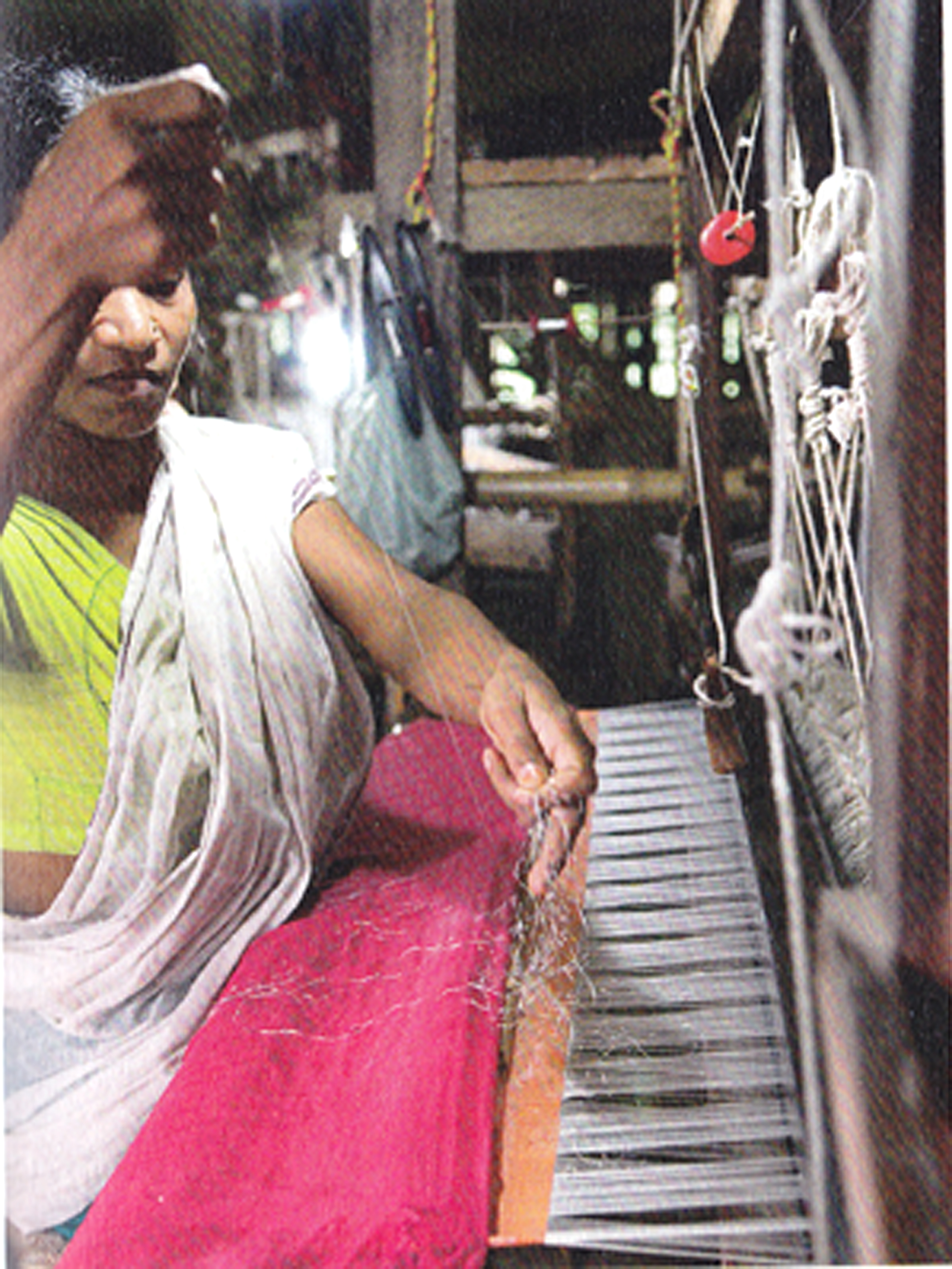
Xatras
derive their income from three main sources: i) land originally granted by
the Kings in pre-colonial days and later ratified by the British, ii)
tithes from disciples, and iii) donations by well-wishers.
Xatras also act as repositories of ancient texts-scrolls on bark
and silk-and documents in original which survive to this day. The
Auniati xatra in Majuli maintains a fine museum for its
collection.
Majuli,
the largest inhabited river-island in the world, is at the centre of the
Vaishnavite culture in
Assam.
The xatriya movement that began in the early 16th
century had its golden period around mid-17th century. The
large xatras of Majuli are of this period: Bengenaati
(1626), Garmur (1650), Auniati (1653), Dakshinpat
(1662) and Uttar Kamalabari (1673). Erosion by the river
Brahmaputra
has reduced Majuli�s area from 1250 sqkm to 650 sqkm. Of its 65
xatras, only 31 remain.
Gradually, the apostles
of the new faith began building xatras for themselves and their
families, and the idea of community service dwindled. Only a handful to
begin with, the Asom Xatra Mahasabha puts the present number of
xatras at more than nine hundred. However, this numerical upsurge has
not translated into greater proliferation of Vaishnava values on
the ground. Through mismanagement and an emphasis on form rather than
substance, the influence of xatras has gradually declined. The
institution of xatra, in true sense of the term, survives only in a
few of them, mainly in Majuli xatras.
Barpeta xatra,
one of the pioneering centres of Sankaradeva�s religion, nurtured by
Madhavadeva, and reputed to have the largest kirtana ghar in Assam,
today does not allow women and Muslims inside its kirtana-ghar, and
barred entry to harijans until a court ruled against the xatra.
However, recent times have seen considerable resurgence in efforts to
revive and conserve the essence of the xatriya traditions. In a
historic moment, on the morning of Sunday, April 4th 2010, under an
initiative by Sri Janaki Ballav Patnaik, Governor of Assam, Pat-bausi
xatra, near Barpeta, where Sankaradeva had spent his most fruitful
years, opened the doors of its kirtana ghar to women, ending
centuries of gender discrimination.
Sankaradeva�s Bardowa
xatra, too, has had a chequered history.
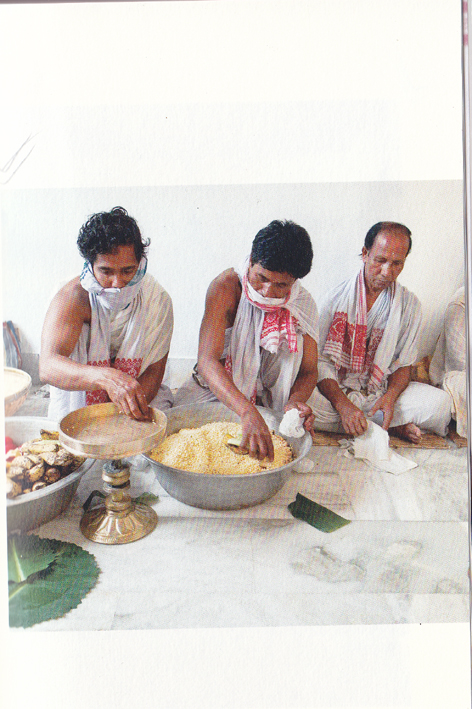
Bardowa Xatra:
After the Bhuyas
left in 1516, the site where Bardowa xatra stood was abandoned, and
for all purposes, lost to the world. Sankaradeva and Madhavdeva after him
never made any attempt to resurrect it during their lifetime; memories of
the trauma Sankaradeva went through in his last days there perhaps a
determinant. Sankaradeva�s kirtana ghar in Bardowa, where he had
spent the first 67 years of his life, perished with time and lay covered
in thick jungle for nearly 150 years.
Finally around 1658,
Kanaklata the principal among the three wives of Sankardeva�s grandson
Chaturbhuja, sought the blessing of the Ahom king Jayadhvaja Singha
(1648-1663), to restore the xatra. Permission was granted.
Kanaklata came and set up camp at Ai Bheti, about 5 miles from Bardowa. She was accompanied by Damodara, Chaturbhuja�s
nominated heir and the son of his sister. Kanaklata was a woman of much ability and great
personality. She was responsible for the considerable furtherance of the
faith of her grandfather-in-law. For the first time in the history of
(Assamese) Vaishnavism, a woman acted as a religious head and
appointed other persons as Superiors.
Kanaklata had the area
cleared and re-established the kirtana ghar at the original site.
Said to have been directed by the wife of an Ahom official to whom
Sankardeva had appeared in a dream, Kanaklata retrieved a stone, buried
near a hilikha or haritaki tree, where Sankardeva is
believed to have done his writings. The stone bearing Sankardeva�s
footprints was placed in a separate house open for public viewing.
There was further
disruption in 1662-63, when Mir Jumla invaded Assam; Kanaklata and
Damodara had to leave Bardowa. During this period of disturbance, they
both managed to secure the patronage of the Ahom king, Chakradhvaja
Singha (1663-69), to establish new xatra in other places. Around 1668,
Kanaklata made an attempt to come back to Bardowa but died on the way at
Kaliabar, near Nowgong. Their descendants continued to look after Bardowa
xatra through several generations.
By the time the Ahom
king Gadadhara Singha (1681-95), came to power, the neo-Vaishnavite
sects, founded on the teaching of Sankardeva, had attained remarkable
dimensions. The country was full of religious preceptors and their
follower claimed exemption from the universal liability to fight and
assist in the construction of roads and tanks and other public works.This
gave the Brahmans an opportunity to turn the king�s mind against
Sankardeva�s religion and its followers. The king ordered the demolition
of all Xatras and an indiscriminate persecution of the followers of
the religion, �to break their power for good and all.�
Bardowa xatra
was also not spared. The descendants of Kanaklata and Damodara eventually
managed to rescue it by playing a hefty penalty. They continued to
administer it jointly for more than a hundred years until 1799 when an
internal feud regarding ownership arose between the descendants of the two
families. The Ahom ruler, King Kamaleswara Singha (1795-1810),
intervened and resolved the issue by dividing the xatra into two
halves, one called Barphal (senior side) going to Damodara�s
descendents, and the other called Saruphal (junior side) going to
Kanaklata�s, each with its own Kirtana ghar.
Divided thus, Bardowa
xatra continued with its two adjacent Kirtana ghars more
than 150 years till another ruler intervened. After India gained
independence, a group of prominent citizens, led by Sri Motiram Borah of
Nowgong, a minister in the Assam Cabinet, brought the two warring factions
together and, on 2nd October, 1958, established once more the
single Kirtana ghar as it stands today.
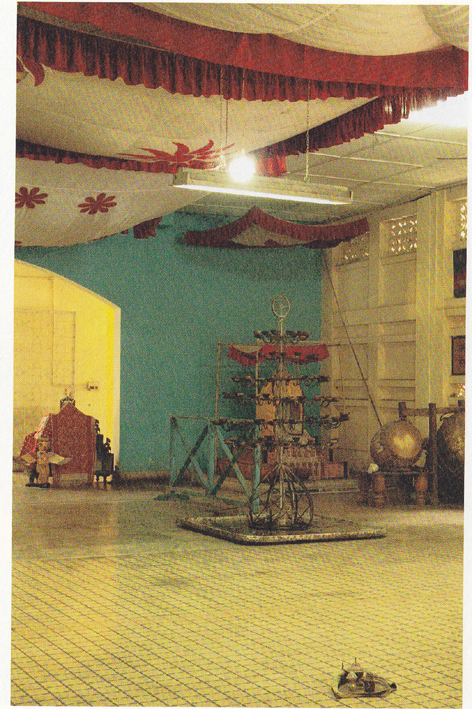
Bargeet
While on his first
pilgrimage, Sankardeva was enthralled when he heard devotees sing the
songs of poets. He saw how a soulful lyric sung melodiously takes a
message straight to the devotee�s heart. Deeply inspired, he composed his
first hymn. He later urged his chief disciple Madhavdeva to follow suit.
The devotional songs composed by Sankardeva and Madhavdeva are called
bargeet, songs of Higher Praise.
Sankardeva has
believed to have composed about 240 hymns. Of these only 35 survived, the
rest destroyed in a fire. Sankardeva was distraught at the loss and did
not write any more songs. Madhavdeva retrieved his guru�s songs from
whatever was retained in the memory of the disciples, and composed new
ones himself. In all, they come to 191 and only these, specifically, are
known as bargeet. Both fine singers of bargeet, Madhavdeva
was considered superior to Sankardeva.
Like most
saint-composers of the day, Sankardeva and Madhavdeva used classical
pan-Indian ragas in their compositions. Together, they worked with more
than thirty ragas, the more popular ones being Dhaneshri, Asowari,
Kalyan, Gauri and Basanta. A specific raga is mentioned at the
top of each song. In 25 of his compositions, Madhavdeva had used raga
Bhatiyali, not usually found amongst the prevalent ragas. Bargeets
are primarily prayer songs sung during various services of the xatras,
and are grouped together for singing at different hours of the day. Their
huge popularity among the masses stems from their simple poetry and
soulful melody.
Bargeet
is convergence of philosophical reflections, secular and ethical
broodings, agonies of the spirit, and saintly humility. Each bargeet
invariably concludes with a passionate cry for refuge at the feet of Lord
Govinda, and deliverance from the sufferings of the world. These
characteristics, much in evidence in his composition at school, find
expression in his very first hymn, composed during his first pilgrimage:
�Rest, my
mind, rest on the feet of Rama;
Seest thou not the great end approaching?
Oh mind, every moment life is shortening,
Just heed, any moment it might fleet off.
Oh mind, the serpent of time is swallowing:
Knowest thou death is creeping on by inches,
Oh mind, surely this body would drop down,
So break through illusion and resort to Rama.
Oh mind, thou art blind;
Thou seest this vanity of things, yet thou seest
not.�
It ends with the lament
�Why art thou, O mind, slumbering at ease?
Awake and think of Govinda,
O mind, Sankara knows it and says,
Except through Rama, there is no hope.�
For Sankaradeva, God is his rock; all else,
unstable.
�I fall at thy feet, O Hari, and offer Thee humble
prayers to save my soul.
Languishing with the poison of the serpent of the
world,
My life is threatened every moment.
Unstable are men and wealth, unstable is youth and
the world:
Wife and son, they are unstable.
Whom should I turn to as eternal and lasting?
My heart is fickle like water on the lotus leaf;
It does not settle for a moment,
Owns no fear in the enjoyment of the world of
senses.
Thou art my destiny,
Thou art my spiritual guide.
Saith Sankara, steer me across the vale of sorrows.�
Reams of learning and mindless rites and rituals
lead not to salvation.
�The scholar does not see the straight path,
Nor does the performer of a million sacrifices
attain Hari.
Both fall down to earth and anon,
All rites and rituals,
All pilgrimages to
Gaya and Kashi
Made round the years,
All yogas done and rhetoric learnt,
Only cloud the vision
Forget therefore the vanity of learning and rites,
And worship the feet of Hari,
In your innermost soul.�
In this world of
illusion, only faith, adoration and devotion to Krishna or Rama can
release human beings from death, destruction and utter ruin.
�O animal in man�s dress,
In the snare of cravings,
You are a prisoner now,
From this prison-world none can rescue you,
Save your own devotion to the Lord.
Devoutly I serve you Lord Rama;
Let his reside in my heart.
Rama is my most precious treasure.
O Lord, leave me not in the grip of death,
Prays the servants of
Krishna.�
The religious poems of
the English poet Robert Herrick (1591-1674) are called �Noble Numbers�;
Bargeets have been variously described as Noble Numbers, great Songs
Celestial, and also as Holy Songs.
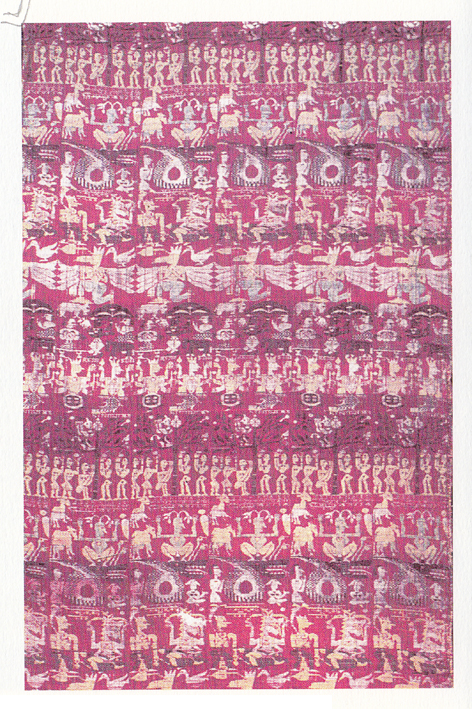
Ankiya Nat or Bhaona
The history of Assamese
drama begins with the plays Sankardeva wrote in early sixteenth century,
Chihna Yatra being the first spark of his imagination. These plays are
popularly known as ankiya nat while their staging is known as
Bhaona. �Ankiya� means �one act� and �nat� means drama; it is
also described as Ek Anka, or a �continuous act in one sitting�. Sankaradeva has to his credit six plays written between 1518 and 1568.
The inspiration for the dramatic narrative is the Bagawata, with
the exception of one which draws upon the Ramayana. Working with the
ageless elements of the ancient scriptures and the epics, Sankaradeva gave
them an idiomatic agency that places them dramatically and firmly amongst
the people.
Indigenous theatrical
elements like the Dhuliya (drummer) and Oja Pali (band of
singers) predate Sankaradeva. Sankardeva blended the existing elements
with classical Sanskrit ideals in creating his ankiya nats, his
bhaonas. As in the case of bargeet, only the plays written by
Sankaradeva and Madhavadeva are termed ankiya nat proper; while the
presentation of such drama in situ is called ankiya bhaona. Plays
by other, written in the same format and presented in an identical manner,
inhabit the general category of bhaona.
The main objective of
the play is to evoke a sense of devotional fervour in the audience. The
plot is so woven as to glorify the Lord, Krishna or Rama. The dramatist
aims neither for originality of narration nor realistic portrayals. While
the language used in the ankiya nat is Brajabuli, newer
plays continue to be written in standard Assamese, and so the tradition is
living one.
The one-act plays are
characterized by shimmering white costumes for the orchestra and rather
fanciful effigies for the actors. The performers enact their roles wearing
masks of gods, goddesses, demons, and animals. These masks are enormous,
often extending as far down as the waist of the performer, some as big as
15 feet in height. Through a combination of movements and gestures
appropriate to the mask he inhabits, the performer brings to life its
mythical concomitant. The governing idea is the creation of a grand
spectacle that readily appeals to the masses. The orchestra providing
musical accompaniment to these dramatic presentations is called, simply,
Gayan (singer) and Bayan (instrumentalist).
The pivotal role in
a bhaona is that of the Sutradhar or the narrator. The
principal objective being to propagate Vaishnavism, songs and
dialogues in the vernacular are interspersed with slokas and other
pieces in Sanskrit. The characters and events are allowed a certain
fluidity and openness to extemporize during the play, as with performance
of Indian classical music. But there is no break in the narrative flow
itself. The Sutradhar strings together all the components: he proclaims
the theme, announces the entrance and exit of each character, elaborates
the different situations, and leads the benedictory singing. Patently,
this
position requires the most varied qualifications: an ability to sing,
dance, recite slokas, and above all, a clear understanding of and close
engagement with the entire play. Sankaradeva�s Sutradhar has his prototype
in the Oja of Oja Pali (band of singers); the Oja Pali chorus is the
precursor of Sankaradeva�s gayan-bayan.
The usual venue for a
bhaona is the naam ghar. However,it is now customary to stage bhaonas on
platforms away from the xatra and the naam ghar. The last decades have
seen great resurgence in the staging of ankiya nat, evoking greater
appreciation of Sankaradeva�s plays both at home and abroad. Bhaona
samaroh, performance of a large number of bhaonas at one venue over a
period of days, has become popular. The one in Majuli, held annually,
draws a large number of visitors from all parts of India and abroad.
Prof. K. D. Tripathi,
Sanskrit scholar and an authority on Natya Sashtra, traces the
origin of Ankiya Nat to Sangitaka form of theatre dating
back to 1st-2nd century B.C. He describes
Sankaradeva�s ankiya nath as remarkable in terms of its philosophy,
aesthetic and innovative techniques, besides being the oldest and the most
important of the North Indian temple theatre forms.
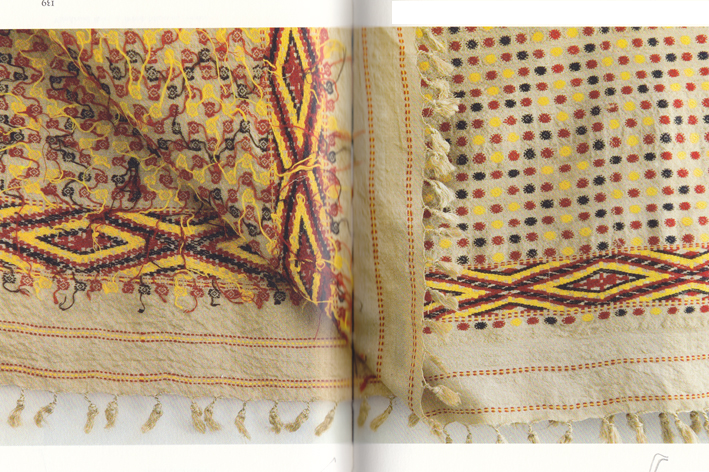
Xatriya Dance
Xatriya
dance or xatriya is one of the eight principal classical Indian
dance traditions. As the form grew within the xatra, it came to be
known as xatriya dance. While some of the other dance traditions
have been revivals of recent times, xatriya dance has remained a
living tradition since its creation by Sankaradeva in 15th
century Assam.
Xatriya
dance began primarily as an accompaniment to Sankaradeva�s ankiya nat.
Sankaradeva drew elements from various folk and ethnic traditions around
him, and refined them to create his dance form. Like Kuchipudi and
Kathakali, xatriya dance is born of the dramatic tradition,
the characters use dance movements to illustrate various bhavas
(sentiment) and rasas (flavour).The abhinaya (acting) is
indispensable but bhakti is the object or goal of the entire
performance. The xatriya dance tradition also has a separate stream
of dance movements independent of the central dramatic narrative.
The core of xatriya
dance is to present mythological teachings to the people in an immediate
and enjoyable manner. Traditionally, it used to be performed by male
bhakats (monks) in xatras as part of their daily
rituals and during special festivals. Now-a days, it is performed by both
men and women and also outside xatra precincts. The dance is
accompanied by bargeet, and the instruments played are khol
(drum), taal (cymbal) and the flute. Other instruments like violin
and harmonium are recent additions.
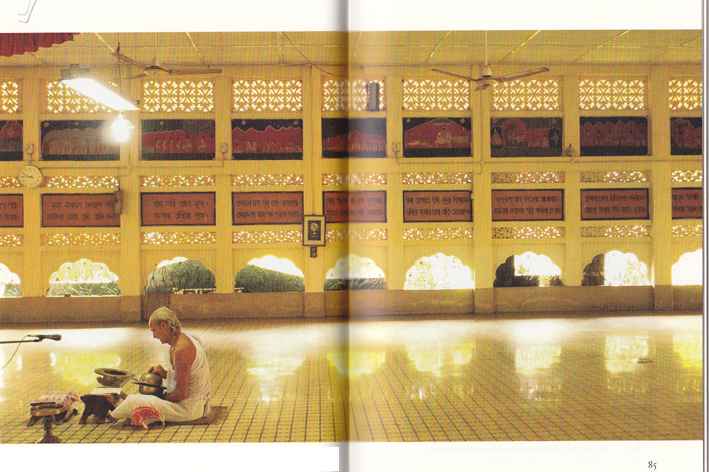
Costumes are made of
paat, a traditional Assamese silk, woven with intricate local
motifs. Ornaments are of traditional Assamese design, such as Gaamkharu,
a large bangle with a clasp, Doogdoogi, heart-shaped locket made of
gold and studded with pearls, Lokaparo, two sets of twin pigeons
placed back to back in gold, Satsori and Golpota, necklaces
made in gold and many more.
The xatras had
maintained certain rigid disciplines within their walls, and the dance was
performed in a highly ritualistic manner by male dancer�s alone. This
classical rigidity, adherence to certain principles, and lack of organized
research on the dance form all contributed to its delayed recognition as
one of the classical dance traditions of India. Finally, on 15 November
2000, the Sangeet Natak Akademi accorded it its current status. The
other seven traditions are: Bharatanatyan, Kathakali, Kuchipudi,
Manipuri, Odissi, Mohiniyattam and Kathak. Among the
eight, xatriya dance is the only one that can be traced back
directly to an individual.
The musical component
of xatriya dance is rich in its tonal quality. Circumstantial
evidence points to the culture of dance and music before Sankaradeva's
time. That both Sankaradeva and Madhavadeva sat their compositions to
classical ragas is in itself indicative of a living
tradition. But there is no specimen of raga music composed in Assam, at a
date earlier to Sankaradeva. It is also likely that music was studied
among the Bhuyas; Sankaradeva in one of his self-introductory
verses praises his father Kusumavara as a gandharva (a musician in
ancient texts) incarnate.
By late 19th century,
xatriya dance had emerged from the confines of Assam's xatras ,
from monasteries it moved to the metropolitan stage. Xatriya is now
performed by both men and women, not affiliated to xatras on themes
other than mythological. Its fame and popularity have spread beyond the
boundaries of the country. A workshop on xatriya dance, organized
in Paris from 31st May to 8th June 2010 attracted artistes from as far as
Mexico, Brazil, Colombia and Iran besides France. In July 2010, a Japanese
lady with a three-year-old daughter arrived in Assam to learn xatriya
and has since performed on stage in Guwahati.
This brings to focus
the need for setting out the training methods of xatriya outside
the xatra tradition. As in other classical Indian dance traditions,
xatriya dance too possesses a strictly circumscribed curriculum of
training although interestingly, the form is without any written text. It
has been handed down orally through the gurukul system prevalent in
the xatra. Teaching, too, is through oral transmission. It�s now
important to document the present units of dance grammar so that a
benchmark is available for reference. And while doing so, care must be taken
to maintain the essence and philosophy which form the soul of the dance
form. This is the challenge before xatriya today.

Vrindavani Vastra
Vrindavani Vastra
brings into focus the range of Sankaradeva's creative genius. Katha
Guru Charita,a chronicle of events during the saint's lifetime, gives
the genesis of Vrindavani Vastra: During his visits to the Koch
Behar royal court, Sankaradeva often regaled Chilarai with descriptions of
the fun-filled childhood days of the young Krishna in Vrindavan.
The prince was enthralled, and wished he could partake of the experience
by sniffing Sankaradeva's lisps he spoke. Sankaradeva replied that,
for the prince's enjoyment, he would have the narrative inscribed on cloth
in a graphic form.
He engaged the weavers
of Tantikuchi, near Barpeta, to weave a forty-yard-long panel of
tapestry depicting Krishna's early life in Vrindavan. Sankaradeva
provided the designs to be woven, chose the various colours of the threads
to be used, and personally supervised the weaving. It took about a year to
complete and, deriving its name from its theme, came to be known as the
Vrindavani Vastra. When first unveiled for viewing, people were
astounded to see the true-to-life depictions of Krishna�s activities in
Vrindavana, the exuberant colours, in woven captions, and exclaimed
that the cloth has come from the heavens and its makers is not a human. A
little before Sankardeva�s death in 1568, he is said to have presented it
to Chilarai and Naranarayana who were both overwhelmed with the result.
How and when it disappeared from Koch Behar is not known and with that, a
valuable piece of history was lost. It would be another 400 years before
one hears of Vrindavani Vastra again.in 1904, Francis Younghusband,
a British Army Officer serving in India, led an expedition to Tibet. Among
the artifacts he took back to
Britain
were a few exquisitely woven �figured silk textiles� from Tibetan
monasteries. These silk tapestries were donated to museum in Britain in
1905 and for the next 85 years remained catalogued as �Tibetan Silk
Lampas�, as Tibet was their last known place of origin. This despite
the iconography on the textiles being clearly Hindu Indian far removed
from the Buddhism practiced in Tibet. Only in 1992, a British scholar
would identify the �Tibetan Silk Lampas� as Vrindavani Vastra.
Krishna Riboud was born
Krishna Roy in 1927, in Dhaka, her mother Ena Tagore being a niece of
Rabindra Nath Tagore. She went to America on a Scholarship to study in
Wellesley College. There she met and married Jean Riboud, a French
aristocrat and wealthy businessman. Together they traveled the world and
amassed a vast collection of paintings and objects d�art, Krishna Riboud�s
special interest being in Oriental Textile. In 1979, she founded the
�Association for the Study and Documentation of Asian Textiles� (AEDTA),
in Paris, to catalogue her collection. It had some 1600 items of Indian
textiles, dating from the end of the 15th century to the
present era. Among the Kashmiri Shwals, saries from Benaras
and Bengal, hand painted cloths, and religious hangings, are few very rare
in Assam half-damasks. In 1990, she offered 148 items out of her
collection to Musee Guimet in Paris. They are housed in a special
gallery in the museum as the Jean and Krishna Riboud collection. Two of
the exhibits of figured silk depict various avatars of Vishnu,
and Krishna�s
activities
in his childhood. Scholars have now determined them to be Vrindavani
Vastra.
As the images of the
Reboud collection gained currently in the art circles, it alerted Rosemary
Crill, Curator of the Indian Department of London�s Victoria & Albert (V &
A) Museum, to two exhibits of �Tibetan Silk Lampas� in the possession of
the V& A. By 1992, altogether 15 different specimens of tapestries of the
same type, described as �strikingly beautiful figured silk textiles�, had
been located in museums around the world: in the U.K., the U.S.A, France,
Italy, and in India�s Calico Museum in Ahmedabad. The term Vrindavani
Vastra, cloth of Vrindavan, is loosely used to describe this
group of tapestries.
The Vaishnavite
iconography, quality of silk, stylization of the drawing, dye analysis,
and the blocks of curious in woven script in the tapestries, first led
Rosemary Crill to Bishnupur in
West Bengal, a known centre for weaving. She had to discount
this theory when the designs appeared far removed from those on known
Bengali silk weavings. She then looked further east although it was
traditionally believed that there has never been any complex, high-quality
textile produced in the north-east except simple tribal weavings or
unadorned silk lengths.
Further research on art
of medieval Assam revealed that during the 1560s. Sankaradeva had offered
Prince Chilarai to oversee the weaving of a great silk scroll, depicting
the early life of
Krishna. A cloth named Vrindavani Vastra is
described there as woven with a large variety of coloured threads like red,
white, black, yellow, green etc.with in woven captions; this description
matched the design in the exhibits of �Tibetan Silk Lampas� in V & A
Museum. Rosemary Crill surmised that these �figured silk textile� must
represent a direct continuation of designs, and some may even be part of
the original vastra itself. Another piece housed in the museum of
Mankind, British Museum, London, revealed a song from Sankaradeva�s drama
Kaliya Daman, beginning with the words �geet raga asowari, awata
kal kali bariara�, in Assamese, an irrefutable evidence of its origin.
Interestingly, almost
all the tapestries have a Tibetan background. How they all got into Tibet
from Assam and why not a single specimen is now available in its place of
origin remain a mystery, as also how such a strong tradition disappeared
without a trace. The Tibetan connection is explained by the existence of a
centuries old and still thriving trade route through Bhutan, just north
Barpeta in Assam, Where the Vrindavani Vastra was woven. The
practice of barter between the merchants of Assam, Bhutan and Tibet was
common. Assamese merchant exchange silk, rice, skins and horns for silver and
salt from Lahasa. At the recent
British
Museum
exhibition �Between Tibet and Assam� affirmed, to this day, to have their
cymbals and their other religious paraphernalia made exclusively by
Assamese bell-metal craft man based in Sarthebari near Barpeta.
The 15 tapestries
differ in quality and design, and are surely not fragments from a single
larger piece. They may have been woven at different times and places other
than Barpeta but scholars agree that they all belong to the same school
and genre as that of Sankaradeva�s weavings. The use of complex weaving
technique such as Lampas indicates great technical skill on part of
weavers, and is strongly suggestive of an enduring tradition of long
standing. The evidence also dispels the nation that northeast India has
never been a centre for complex, high quality textile production.
Furthermore, it lends credence to the suggestion made by some scholars
that there once existed a thriving trade in silk between
Assam
and China.
History of medieval
Assam
records that nearly every household had knowledge of weaving and produced
fine clothes of cotton and silk. Professional weavers called Tantits
were settled at certain locations such as Tantikuchi, where the
Vrindavani Vastra was woven and the Barpeta Kirtana ghar now
stands. Sankaradeva, on return from his first pilgrimage (circa 1493), is
said to have organized a group of weavers to try new ideas and
innovations. Further, a mammoth task as the Vrindavani Vastra would
not be undertaken without trained weavers already at hand. As is the
practice with Assamese Vaishnavism, sacred texts are placed on the
altar in place of idols. These cloths are used to cover the altar and also
to wrap the text itself. Evidence suggests that over a period of time, the
elaborate and complex designs gave way to simplified, large scale,
repetitive motifs of today.
Of the 15 tapestries
identified so far, as 14 appear to have been woven in mid 17th
to early 18th century. While indicative of the tradition
persisting long after Sankardeva�s death, these 14 are ruled out from
being a part of the original Vrindavani Vastra. The only likely
contender for this distinction is a piece measuring 2 feet 8 inches by 7
feet 8 inches, now on display in Musee Guimet in Paris. Intended as
a �Gokhain Kapor� an altar cloth, it depicts various avatars
of Vishnu, the man-eagle Garuda, and Krishna playing the flute in
the branches of a tree. It is the finest and earliest of this group and
the date of around 1565-1569 is compatible with the style of drawing of
the period. However, lack of comparable physical evidence in its place of
origin, leaves the mystery unresolved.
Popular belief in Assam
has it that the tapestry now housed in the British Museum, Museum of Mankind,
London, is the or at least a part of the original Vrindavani Vastra
presented by Sankardeva to Chilarai in 1567-68. This belief has been
reinforced by it being so depicted in a recent (2010) Assamese film on the
saint. By far the largest of the fifteen known specimens, this vast
hanging consist of twelve silk lamps panels stitched together. Over nine
meters wide and nearly two meters long, this magnificent specimen was
taken from a monastery near Gyantse in
Tibet
by a member of the 1904 Younghusband expedition. The British Museum after
detailed study and technical analysis has dated it as of mid to late 17th
century, nearly a hundred years after the saint�s death. This was
confirmed in a public address by Richard Blurton, Curator of British
Museum, during his visit to Assam in late 2009. Furthermore, while Lampas
weaves were developed as 1000 A.D., its production began in earnest only
in late 17th century in Lyon, France. However, public sentiment
still holds sway over scientific evidence.
The innate quality of
these tapestries is evident as on 25 March 2004, Christie�s of New York,
the auctioneers, put on sale a piece of �figured silk from Assam� at a
reserve price of 1,20,000 US Dollars. More than four hundred years after
it was created, Vrindavani Vastra continues to weave its magic on a
timeless warp.
|
